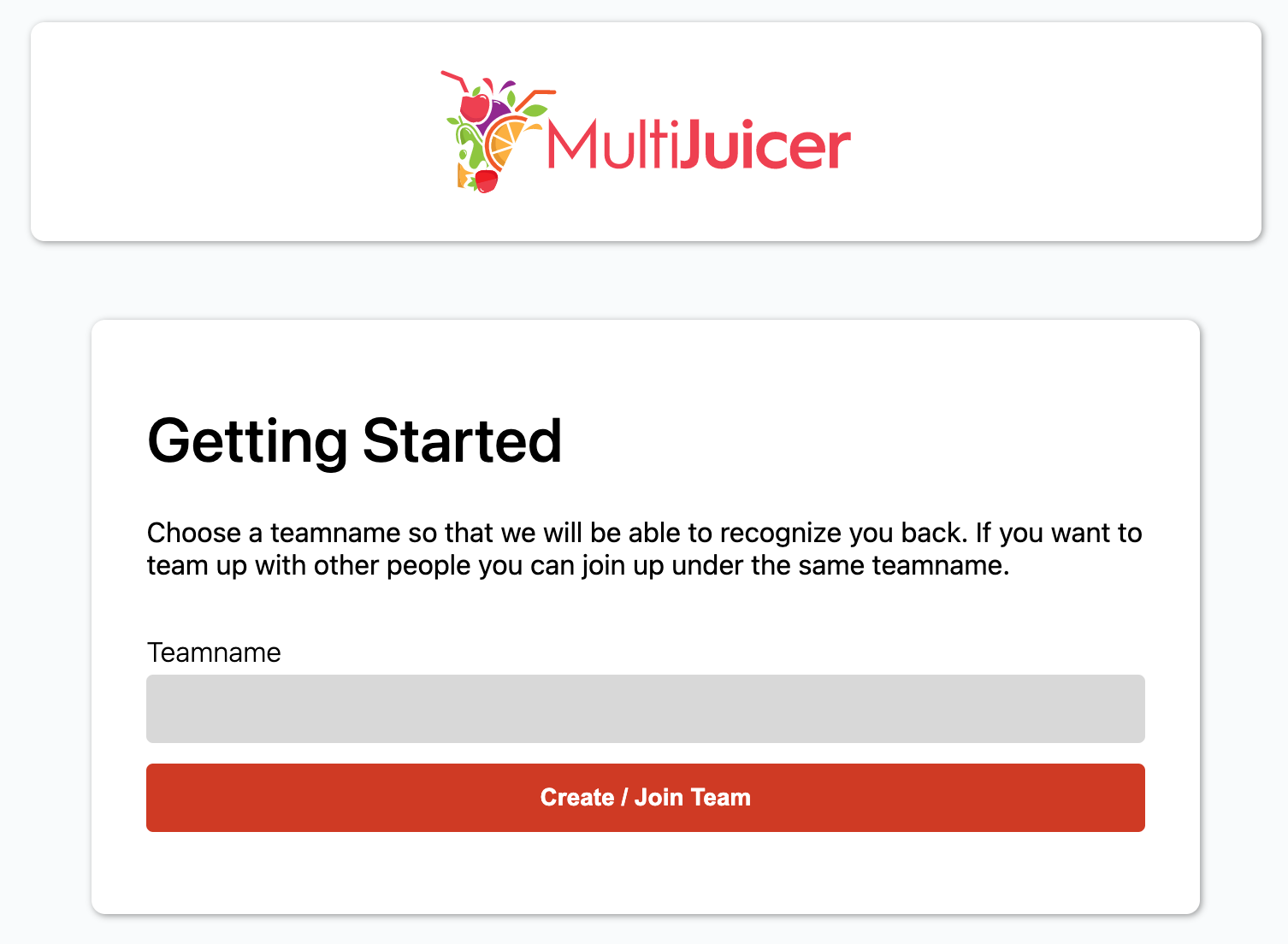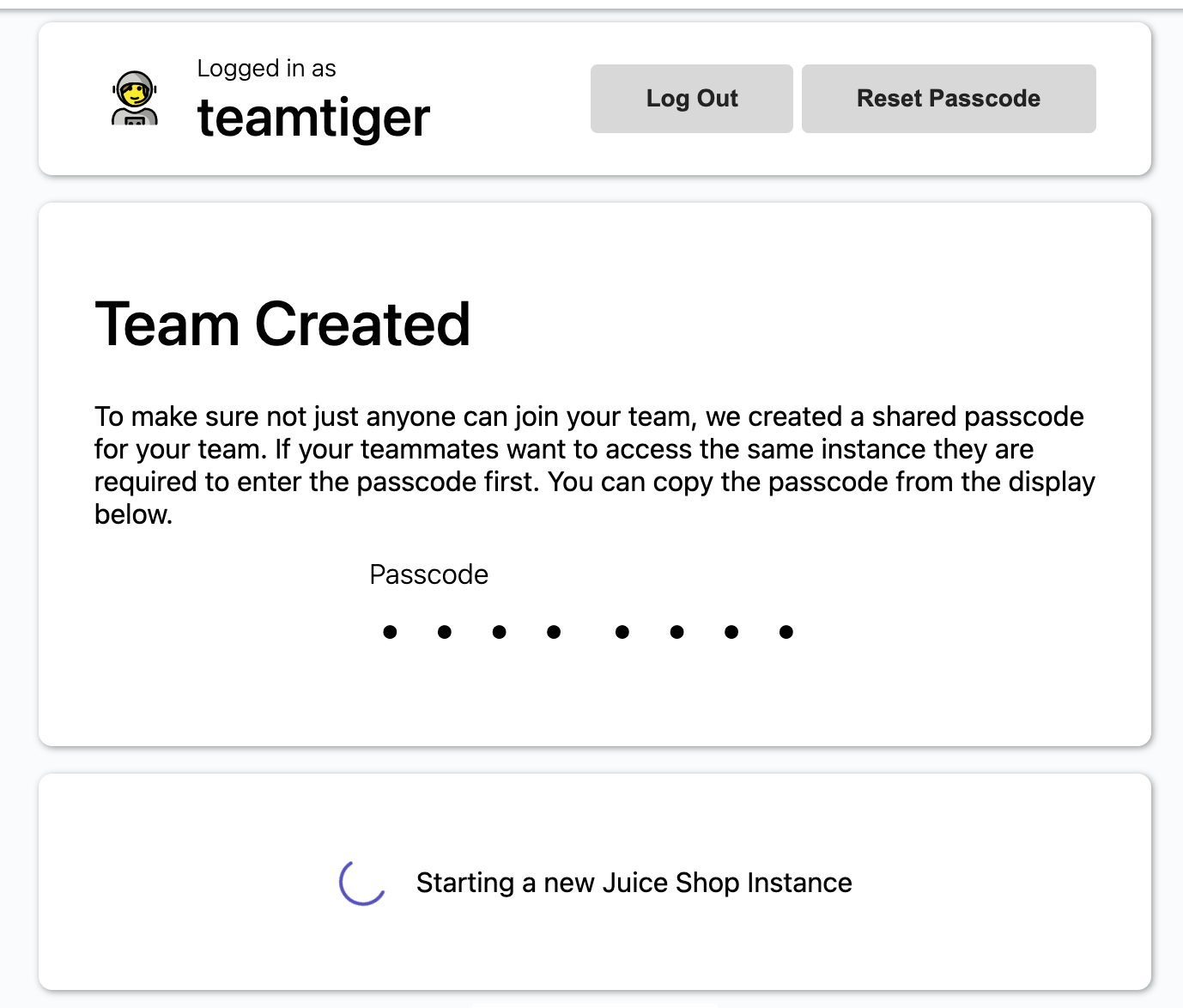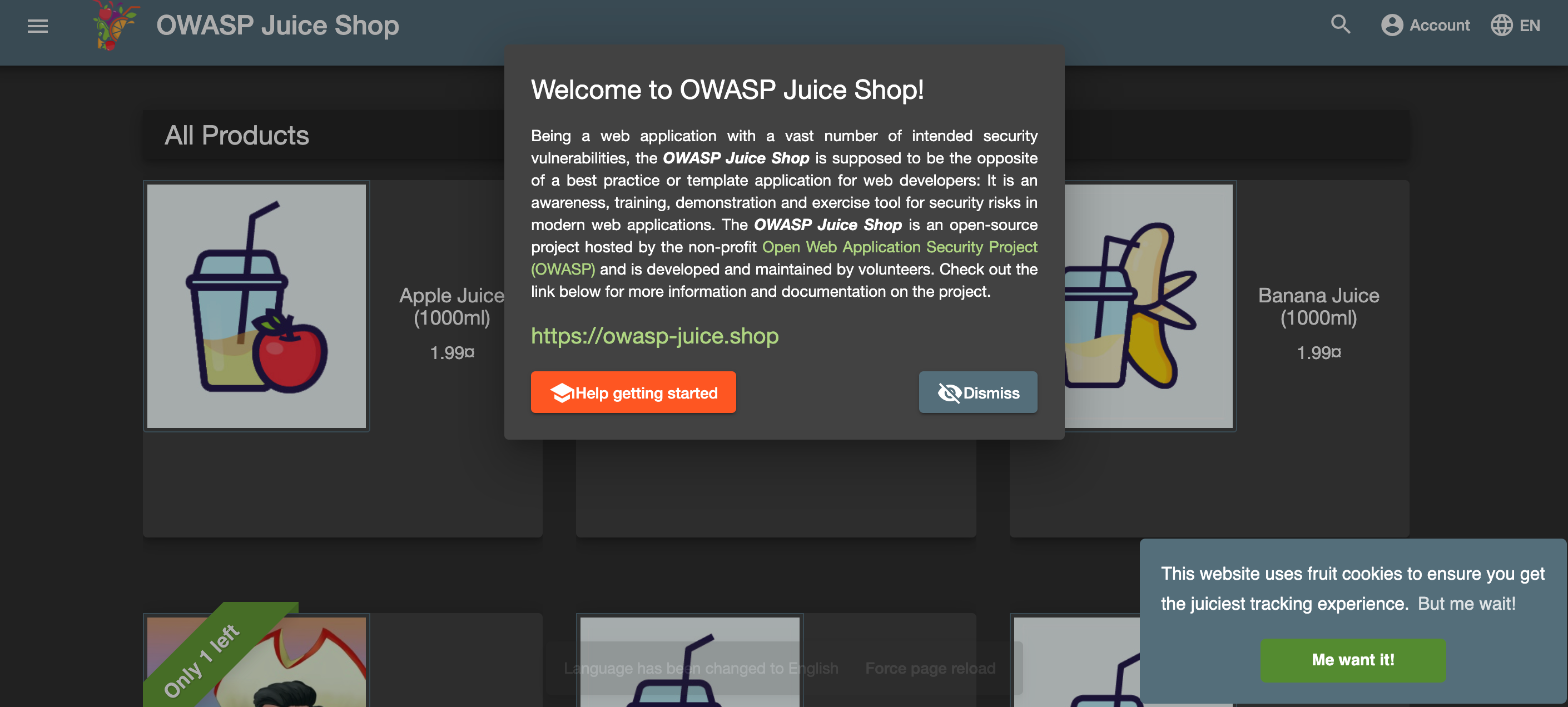Kubernetes Multi-Juicer
If you ever wanna run a Multiplayer OWASP Juice Shop CTF on your own, here are some Notes and Info for bloody beginners
References
- https://github.com/iteratec/multi-juicer/
- https://www.digitalocean.com/
- https://kubernetes.io/de/docs/concepts/overview/what-is-kubernetes/
Prerequisite
you’ve got
- a Digital Ocean Account (or some other Cloud Provider)
- a spare domain and set the NS of DigitalOcean
- Digital Ocean CMD Line Tools installed and configured
- helm tools (kubernetes package manager -> brew install helm)
- some budget (~2 CHF/Day)
- 30min for Setup
btw. all this commands should run on macOS. linux may needs some adjustments …
Set Environment
set a few variables as we need them later in the scripts
test $domain || domain='your.domain'
host='ctf'
fqdn="${host}.${domain}"
echo "*** $(date)***" >> info.md
echo "FQDN: ${fqdn}" >> info.md
echo "domain=${domain}" > .env
echo "host=${host}" >> .env
echo "fqdn=${fqdn}" >> .env
Check Connection
are we connected and authorized to DO ?
doctl account get
doctl auth list
$ doctl account get
User Email Team Droplet Limit Email Verified User UUID Status
mail@your.domain YourTeam 25 true xxxxxxxxxxxxxxxxxxxxxxxxxxxxxxxxxxxxxxxx active
$ doctl auth list
default (current)
Connect to Digital Ocean if needed
if your not connected to DO, generate a Token on the API Menu and add it like this:
doctl auth init --context TOKENID
Create Cluster / 1 CPU, 2GB RAM
this needs a few minutes. just be patient :)
#time doctl kubernetes cluster create juicy-k8s --region fra1 --node-pool "auto-scale=true;min-nodes=3;max-nodes=5"
Create Cluster / 2 CPU, 2GB RAM
needed to update to a stronger box due to k8s issues!
time doctl kubernetes cluster create juicy-k8s --region fra1 --node-pool "size=s-2vcpu-2gb;auto-scale=true;min-nodes=3;max-nodes=5"
$ time doctl kubernetes cluster create juicy-k8s
Notice: Cluster is provisioning, waiting for cluster to be running
.....................................................
Notice: Cluster created, fetching credentials
Notice: Adding cluster credentials to kubeconfig file found in "/Users/stoege/.kube/config"
Notice: Setting current-context to do-nyc1-juicy-k8s
ID Name Region Version Auto Upgrade Status Node Pools
c3564b4f-501d-450b-xxxx-xxxxxxxxxxxx juicy-k8s nyc1 1.22.11-do.0 false running juicy-k8s-default-pool
real 4m57.624s
user 0m0.129s
sys 0m0.063s
List Clusters
doctl kubernetes cluster list
$ doctl kubernetes cluster list
ID Name Region Version Auto Upgrade Status Node Pools
5bd4401c-7a82-4240-xxxx-xxxxxxxxxxxx juicy-k8s fra1 1.22.11-do.0 false running juicy-k8s-pool-1
Get the Current Context
kubectl config current-context
$ kubectl config current-context
do-fra1-juicy-k8s
Install MultiJuicer via Helm
helm repo add multi-juicer https://iteratec.github.io/multi-juicer/
time helm install multi-juicer multi-juicer/multi-juicer
helm install multi-juicer multi-juicer/multi-juicer
NAME: multi-juicer
LAST DEPLOYED: Fri Jul 8 23:36:45 2022
NAMESPACE: default
STATUS: deployed
REVISION: 1
TEST SUITE: None
NOTES:
MultiJuicer deployed! 🎉🥳
To administrate the cluster you can log into the JuiceBalancer with the admin account:
Username: admin
Password: ${kubectl get secrets juice-balancer-secret -o=jsonpath='{.data.adminPassword}' | base64 --decode}
Extract Admin Password
adminpw=$(kubectl get secrets juice-balancer-secret -o=jsonpath='{.data.adminPassword}' | base64 --decode)
echo "Admin Password: ${adminpw}" |tee -a info.md
unset adminpw
Show Nodes and Pods
this may needs a few moments …
while true; do echo; kubectl get nodes; kubectl get pods; echo; sleep 5; done
kubectl get nodes
NAME STATUS ROLES AGE VERSION
juicy-k8s-default-pool-cicp5 Ready <none> 2m59s v1.22.11
juicy-k8s-default-pool-cictf Ready <none> 15m v1.22.11
juicy-k8s-default-pool-cictx Ready <none> 14m v1.22.11
juicy-k8s-default-pool-cicty Ready <none> 15m v1.22.11
kubectl get pods
NAME READY STATUS RESTARTS AGE
juice-balancer-846449bd74-g4ktk 1/1 Running 0 5m27s
progress-watchdog-6586786884-w76vh 1/1 Running 0 5m27s
wait until all nodes and pods are status “Ready/Running”
Add Loadbalancer and Expose to Inet
List Certificates
doctl compute certificate list
ID Name DNS Names SHA-1 Fingerprint Expiration Date Created At Type State
Create Certificate
doctl compute certificate create --type lets_encrypt --name ctf --dns-names ${fqdn}
$ doctl compute certificate create --type lets_encrypt --name ctf --dns-names ctf.8192.ch
ID Name DNS Names SHA-1 Fingerprint Expiration Date Created At Type State
a18460c3-554a-4bd7-xxxx-xxxxxxxxxxxx ctf ctf.your.domain 0001-01-01T00:00:00Z 2022-07-08T21:47:00Z lets_encrypt pending
and wait a Moment until State switches to verified
doctl compute certificate list
build loadbalancer config
extract certificate id and put in config
certid=$(doctl compute certificate list |awk -v pat="$fqdn" '$0 ~ pat{print $1}')
cat << EOF > do-lb.yaml
kind: Service
apiVersion: v1
metadata:
name: multi-juicer-loadbalancer
annotations:
service.beta.kubernetes.io/do-loadbalancer-protocol: 'http2'
service.beta.kubernetes.io/do-loadbalancer-certificate-id: '${certid}'
service.beta.kubernetes.io/do-loadbalancer-redirect-http-to-https: 'true'
service.beta.kubernetes.io/do-loadbalancer-algorithm: 'round_robin'
service.beta.kubernetes.io/do-loadbalancer-healthcheck-protocol: 'http'
service.beta.kubernetes.io/do-loadbalancer-healthcheck-path: '/balancer/'
spec:
type: LoadBalancer
selector:
app.kubernetes.io/instance: multi-juicer
app.kubernetes.io/name: multi-juicer
ports:
- name: http
protocol: TCP
port: 443
targetPort: 3000
EOF
kubectl create -f do-lb.yaml
Wait for LBL IP
this needs 2-3min
while true; do kubectl describe services multi-juicer-loadbalancer |awk '/LoadBalancer Ingress/{print $3}'; echo "."; sleep 5; done
Get LBL IP
lbip=$(kubectl describe services multi-juicer-loadbalancer |awk '/LoadBalancer Ingress/{print $3}')
echo "Loadbalancer IP: ${lbip}" |tee -a info.md
-> Loadbalancer IP: 178.128.xxx.yyy
Update DNS
set A record ctf.your.domain to 178.128.xxx.yyy
doctl compute domain records create ${domain} --record-type A --record-data ${lbip} --record-ttl 3600 --record-name ${host}
doctl compute domain records list ${domain}
Check DNS
doctl compute domain records list ${domain} |grep ${host}
dig +short @9.9.9.9 ${fqdn}
dig +short @ns1.digitalocean.com ${fqdn}
host ${fqdn}
Check Page
echo "https://${fqdn}"
echo "https://${lbip}"
you should get the Welcome Page !
Now, the Teams can register themself …
… and start the Challenge !
Usefull Links
- https://ctf.your.domain/balancer/score-board/ -> list of all Teams !
- https://ctf.your.domain/#/score-board -> hidden Score Board Page with lot of Tips and Tricks
CleanUp
as the Machines costs Money (-> up to 60 CHF/Month), you wanna delete and remove all the stuff after the Challange)
# Delete Multi Juicer
helm delete multi-juicer
# Delete the loadbalancer
kubectl delete -f do-lb.yaml
# Delete the kubernetes cluster
doctl kubernetes cluster delete juicy-k8s -f
# Delete Certificate
certid=$(doctl compute certificate list |grep ${fqdn} |awk '{print $1}')
doctl compute certificate delete ${certid} -f
# Delete A records
arecordid=$(doctl compute domain records list ${domain} |grep ${host} |awk '{print $1}')
doctl compute domain records delete ${domain} ${arecordid} -f
# Droplets killed as well ?
doctl compute droplet list
# in Digital Ocean Page:
$-> delete the Hosts if still running (should not be ...)
Kubernets Commands
kubectl config get-contexts
kubectl cluster-info
kubectl version
kubectl get nodes
kubectl help
doctl kubernetes cluster kubeconfig
show <cluster-id|cluster-name>
doctl kubernetes
Setup Script / Part 1
copy / paste following Script. Should run under MACOS without Problems ;)
ETA: around 10min
export project="juicy-k8s"
export domain="mydomain.com"
export host="shop"
cat << 'EOS' > install_k8s.sh
#!/usr/bin/env bash
# MultiJuicer Setup Script
test -d game || mkdir game
cd game
if [[ -f .env ]]; then
source .env
else
test $project || domain='PROJECT-NOT-SET'
test $domain || domain='DOMAIN-NOT-SET'
test $host || host='HOST-NOT-SET'
fqdn="${host}.${domain}"
echo $project, $domain, $host, $fqdn
export project="$project"
export domain="$domain"
export host="$host"
export fqdn="$fqdn"
echo "project=${project}" > .env
echo "domain=${domain}" >> .env
echo "host=${host}" >> .env
echo "fqdn=${fqdn}" >> .env
fi
echo
echo "*** $(date)***" |tee info.md
echo "Project: ${project}" |tee -a info.md
echo "FQDN: ${fqdn}" |tee -a info.md
echo
read -p "Press enter to continue (or CTRL-C to break)"
doctl kubernetes cluster \
create ${project} \
--region fra1 \
--node-pool "size=s-2vcpu-2gb;auto-scale=true;min-nodes=3;max-nodes=5"
echo "sleep 15"; sleep 15
kubectl config current-context
helm repo add multi-juicer https://iteratec.github.io/multi-juicer/
helm install multi-juicer multi-juicer/multi-juicer
echo "sleep 15"; sleep 15
adminpw=$(kubectl get secrets juice-balancer-secret -o=jsonpath='{.data.adminPassword}' | base64 --decode)
echo "Admin Password: ${adminpw}" |tee -a info.md
unset adminpw
kubectl get nodes
kubectl get pods
doctl compute certificate list
doctl compute certificate create --type lets_encrypt --name ${host} --dns-names ${fqdn},${host}1.${domain},${host}-1.${domain},${host}2.${domain},${host}-2.${domain},${host}3.${domain},${host}-3.${domain}
echo "sleep 15"; sleep 15
certid=$(doctl compute certificate list |awk -v pat="$fqdn" '$0 ~ pat{print $1}')
cat << EOF > do-lb.yaml
kind: Service
apiVersion: v1
metadata:
name: multi-juicer-loadbalancer
annotations:
service.beta.kubernetes.io/do-loadbalancer-protocol: 'http2'
service.beta.kubernetes.io/do-loadbalancer-certificate-id: '${certid}'
service.beta.kubernetes.io/do-loadbalancer-redirect-http-to-https: 'true'
service.beta.kubernetes.io/do-loadbalancer-algorithm: 'round_robin'
service.beta.kubernetes.io/do-loadbalancer-healthcheck-protocol: 'http'
service.beta.kubernetes.io/do-loadbalancer-healthcheck-path: '/balancer/'
spec:
type: LoadBalancer
selector:
app.kubernetes.io/instance: multi-juicer
app.kubernetes.io/name: multi-juicer
ports:
- name: http
protocol: TCP
port: 443
targetPort: 3000
EOF
kubectl create -f do-lb.yaml
EOS
chmod 700 install_k8s.sh
Wait for Loadbalancer
let this commands running until you got an ip address … takes up to 3min
while true; do \
lbip=$(kubectl describe services multi-juicer-loadbalancer |awk '/LoadBalancer Ingress/{print $3}'); \
echo $lbip; \
echo .; \
sleep 5; \
done
Setup Script / Part 2
get IP for Loadbalancer, set DNS Record, done
cat << 'EOS' > install_dns.sh
# Env
test -f game/.env && source game/.env || exit 1
lbip=$(kubectl describe services multi-juicer-loadbalancer |awk '/LoadBalancer Ingress/{print $3}')
echo "Loadbalancer IP: ${lbip}" |tee -a game/info.md
# A Record
doctl compute domain records create ${domain} \
--record-type A \
--record-data ${lbip} \
--record-name ${host}
# More A Records
for i in {1..3}; do
doctl compute domain records create ${domain} \
--record-type A \
--record-ttl 3600 \
--record-data ${lbip} \
--record-name ${host}${i}
done
# some CNAME
for i in {1..3}; do
doctl compute domain records create ${domain} \
--record-type CNAME \
--record-ttl 3600 \
--record-name ${host}-${i} \
--record-data ${fqdn}.
done
doctl compute domain records list ${domain}
echo; echo "Done! Check Page:"
echo "https://${fqdn}"
echo "https://${lbip}"
echo "$(cat game/info.md |grep -i password)"; echo
EOS
chmod 700 install_dns.sh
Setup Script / Uninstall
cat << 'EOF' > uninstall.sh
# Env
test -f game/.env && source game/.env || exit 1
# Delete Multi Juicer
helm delete multi-juicer
# Delete the loadbalancer
kubectl delete -f game/do-lb.yaml
# Delete the kubernetes cluster
doctl kubernetes cluster delete juicy-k8s -f
# Delete Certificate
certid=$(doctl compute certificate list |grep ${fqdn} |awk '{print $1}')
doctl compute certificate delete ${certid} -f
# Delete A records
arecordid=$(doctl compute domain records list ${domain} |grep ${host} |awk '{print $1}')
doctl compute domain records delete ${domain} ${arecordid} -f
# Cleanup
rm -rf game
# Wait until gone
echo "press CTLR-C when all nodes are gone ..."
while true; do doctl compute droplet list; sleep 5; done
EOF
chmod 700 uninstall.sh
Project Management
Create Project
doctl projects create --name "Test123" --purpose "Learning"
List Projects
$ doctl projects list -o json
[
{
"id": "aa444047-7eee-4548-94db-5485b705b905",
"owner_uuid": "8a0d816ec1a780bfb985147b10157563d1c0ff4a",
"owner_id": 1883170,
"name": "Test123",
"description": "",
"purpose": "Other: Learning",
"environment": "",
"is_default": false,
"created_at": "2022-08-10T12:04:03Z",
"updated_at": "2022-08-10T12:04:03Z"
"updated_at": "2022-07-06T20:14:51Z"
}
List all Records
set Variable for all following Snippets
mydomain="bliblablu.com"
List all Records
doctl compute domain records list ${mydomain}
List all ID’s for A Records
doctl compute domain records list ${mydomain} --format Type,ID |\
awk '/^A /{ print $2 }'
Delete all “A” Records
-f will enforce without asking !
doctl compute domain records delete ${mydomain} -f $(\
doctl compute domain records list ${mydomain} --format Type,ID |\
awk '/^A /{ print $2 }' \
)
List all Records except NS/SOA
doctl compute domain records list ${mydomain} --no-header --format Type,ID |\
awk '!/^(NS|SOA) /{ print $2 }'
Delete all Records except NS/SOA
-f will enforce without asking !
doctl compute domain records delete ${mydomain} -f $(\
doctl compute domain records list ${mydomain} --no-header --format Type,ID |\
awk '!/^(NS|SOA) /{ print $2 }' \
)
or
doctl compute domain records list ${mydomain} --no-header --format Type,ID |\
awk '!/^(NS|SOA) /{ print $2 }' |\
doctl compute domain records delete ${mydomain} -f $(cat -)
Any Comments ?
sha256: d8c59a70d9b6c07e289a9395b2f38cfa0b32cc27abf323fc4f32c407283d4a3c


